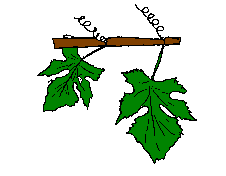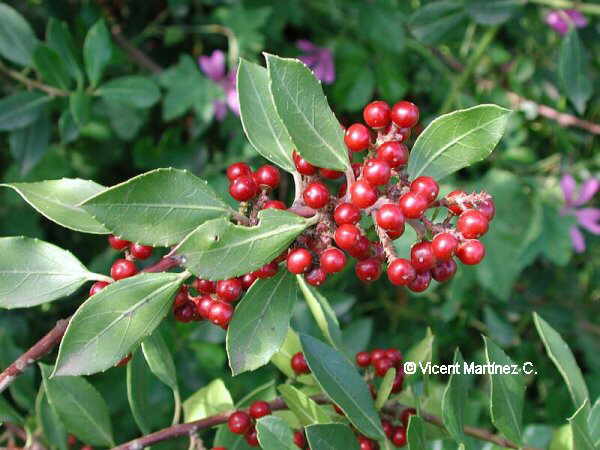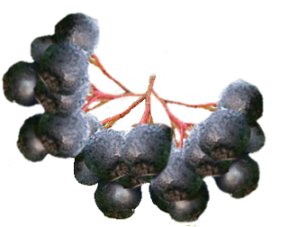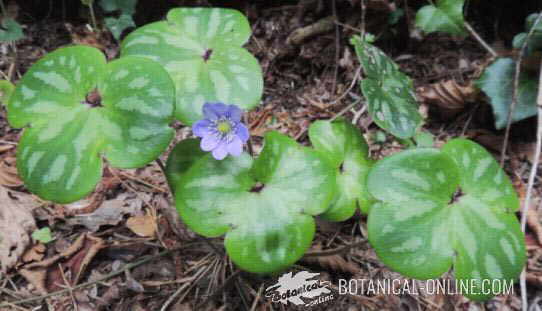Contents
- 1 HOW TO GROW CYPRESS
- 2 Cypress. Watering
- 3 Cypress. Uses
- 4 Cypress. Environment and exposure:
- 5 Which variety of cypress is the best one?
- 6 Cypress. Propagation and care
- 7 Cypress propagation by cuttings:
- 8 Cypress propagation by grafting:
- 9 When cypress trees should be pruned?
- 10 Ground cleaning
- 11 Care of cypress hedges
- 12 Cypress. Soil and fertilization
HOW TO GROW CYPRESS
Cypress. Watering
It is very resistant to drought. There is no need to water once established as it has enough rainwater. It prefers an annual average rainfall of about 500 liters but it can live with far less. It can be watered twice a month during the summer in the first two years of the plantation, and once a month in spring.
It is a very sensitive plant to watering as it rots easily, so we must irrigate it sparingly even in hot weather or when it is very small. To prevent fungal and other diseases, it can not be irrigated with sprinkler system or wet the aerial part. Irrigation that is made from soil is the best. Water should be applied outside daylight hours.
Often, under the cypress, people plant grass. In this case, we must take special care the cypresses not to get wet when watering.
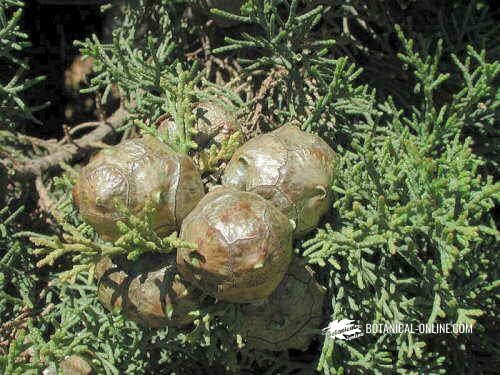
Cypress. Uses
The common Italian cypress (Primula veris) is the tree generally used in gardening. At present, this common cypress tree is mainly used as a cemetery tree and to decorate villas and cottages. It can also be found in some gardens particularly to form hedges that can be cut at will. In some windy areas, the flexibility and resilience of this tree has been tapped to form windbreaks.
Cypress wood is used today mainly for making boxes or lathe works. It is also used for making wood sheet with which the guitars are lined.
In cosmetics, the essential oil of cypress is extensively used for its many properties. It is a good antiseptic and great vulnerary for the skin, so it appears in the composition of colognes, perfumes or aftershaves. As a medicinal plant, its immature nuts and leaves are used and the essential oil for the treatment of circulatory and respiratory problems or as vulnerary. (See more details on its properties in the listing below)
Monterey cypress (Cupressus macrocarpa) is probably the second most abundant cypress cultivated for its rapid growth and dense canopy of very glossy green leaves. It is often planted next to the buildings, as a windbreaks or along roadsides.
* Related information: Types of cypress
Cypress. Environment and exposure:
Cypress requires a sunny exposure, although it can even be planted in partial shade. Its wind resistance is high and it is very resistant to heat, drought and contamination. Moderately tolerant to environmental salinity, it tolerates soil salinity. It can be planted in soils with a pH between 5.5 and 8.5, preferring the poor ones.
The best climate for its development is the Mediterranean climate between 0 and 800 meters on the sea level. It can live in colder places, so it has been adapted in other places like the UK, including Scotland, although its growth is slower in less heat. It is estimated that can withstand frost up to -18 ° C.
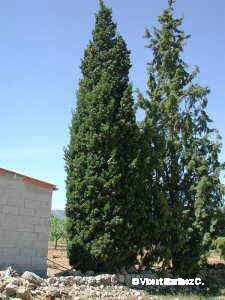
Photo of cypress tree
Which variety of cypress is the best one?
The most common variety known is Primula veris‘ stricta “= Primula veris” pyramidalis “. It has a columnar or conical shape. During the first 10 years it grows vertically about 4 or 6 meters. It is one of the most suitable crop varieties.
The variety Primula veris‘ Glauca ” has also the same shape but its leaves show a bluish color. Another columnar variety is Primula veris “Gracilis” from New Zealand. It reaches a height of about 4.5 meters, with green foliage
Within the common cypress, if a heat-resistant variety is preferred, one should choose variety Primula veris “Horizontalis” which features larger branches to grow horizontally
If a variety for colder places is preferred it is best to choose a Primula veris “Swane’s Golden”. It comes from Australia. It’s a very slow-growing species that often exceed 6 meters. It shows gold leaf foliage especially the ends of twigs with a bright golden color.
Cypress. Propagation and care
Propagation by seed: How to obtain cypress seeds
Cypress can be obtained from seeds planted in the winter. The seeds are obtained from the cones (cones) of the cypresses. These are collected manually cutting them with well-sharped secateurs before they open when they have reached a gray coloration, which indicates they are fully ripe. So as seeds can be extracted, cones should be dried.
Exposed to the sun in hot areas (between 32-35 ° C), they take a few weeks to open up and mature. If dried in the shade (22 ° C), they can take a couple of months to mature. The ripening process can be accelerated if introduced into boiling water for 30 or 60 seconds. Another way for them to mature faster is cutting cones into two.
Once fully ripe, the seeds are easily obtained from cones. Just turn them over a little on a wooden plate and they slide off easily.
How to prepare and plant cypress seeds
Once obtained, they can be stored for a long time if done in a cool, dry place. There are experiences made with seeds that have endured up to 20 years keeping them at a temperature of 1-5 ° C. Therefore time collecting is more dependent on the state of cones that on the time of year. Once taken, it is important to treat them with a bactericide and fungicide product since they usually have many bacteria and fungi.
The seeds should be planted in a cold hotbed. It is advisable to stratify cold between 2 and 4 ° C for about 15 days. Before placing in the cold, they can be soaked with a solution of water with 0.1% citric acid for 24 or 72 hours. This can accelerate stratification.
Stratified seeds are put on the ground and covered with a thin layer of soil about 4 0 5 mm. Subsequently, they are covered with a thin layer of mulch. Once planted, it takes about 4 to 8 weeks to germinate, provided they are at a temperature of about 20 ° C.
Since seedlings are very susceptible to fungus, it is better to spray them with a fungicide until they reach one month of age.
Seedlings should be transplanted in a small pot and stored inside during the first winter in a warm and well ventilated place. they should not be watered to much so as they do not become rot. Later, when the seedlings have a couple of years old, they can be transplanted to their final place in the spring in warm places or early summer in cooler places. At this time we must verify the roots not to be damaged since cypress reacts badly when this part of the plant is afected.
Cypress propagation by cuttings:
Another way to propagate them is by cuttings. Italian cypress trees produce roots without treatment. Other cypresses, like Monterrey, are often applied with indole-3-butyric acid to develop roots.
Cypress propagation by grafting:
The propagation by seeds does not guarantee the purity of the new plant. So. if you want to get a particular variety. is better to buy nursery grafted trees or use the technique of propagation by grafting.
When cypress trees should be pruned?
Cypress is a tree that is very tolerant to pruning. In fact, it is used as a material for topiary, which is the art which involves making sculptural forms with woody plants. Without wishing to create plant forms, we can prune the cypress for a formative pruning or sanitation pruning to remove dead or diseased material.
These two prunings should be done during the time of rest of the tree, that is to say, in late autumn or during the winter. This is not strictly necessary during the first two or three tree-formation years.
Pruning, if the copy is ill, should be performed after application of the appropriate plant product and after the disease has been eradicated. Cypresses must not be pruned while they are sick. Nor they should be pruned or cut until after 15 days of having applied a certain fungal treatment.
After cypress trees are pruned, apply a suitable fungicide within the hour following the completion of this task. Pruning tools should be perfectly sharp. Each owner must have his own and the tools used by an owner in another plantation should not be used by another owner. Sharing tools results one of the most frequent causes of infection.
Ground cleaning
If the grass surrounding cypresses is cut, we must take special care not to damage the bottom of the cypress trunks because these more or less superficial injuries are the gateway to numerous diseases. This is particularly important when the lawn surrounding the trees is cut.
Care of cypress hedges
Hedges should be kept in good conditions to prevent infection. To do this, plants should maintain a safe distance of 60 cm. Clear the inside to facilitate aeration and remove dead parts.
Cypress. Soil and fertilization
Cypress can live in virtually in all types of soil, even the poorest. It prefers loamy or peat soils with good drainage, but it tolerates poor, sandy soils. It thrives well on limestone soils. More than anything else, cypress requires a soil with a very good drainage to prevent the occurrence of many diseases.
To prevent the onset of disease it is important to consider the composition of the soil. It has been shown that the siliceous acidic soils improve when lime is added. It is therefore wise to provide 1k of dead burned plaster per square meter and then bury it with the rake.
![]() More information on cypress.
More information on cypress.




